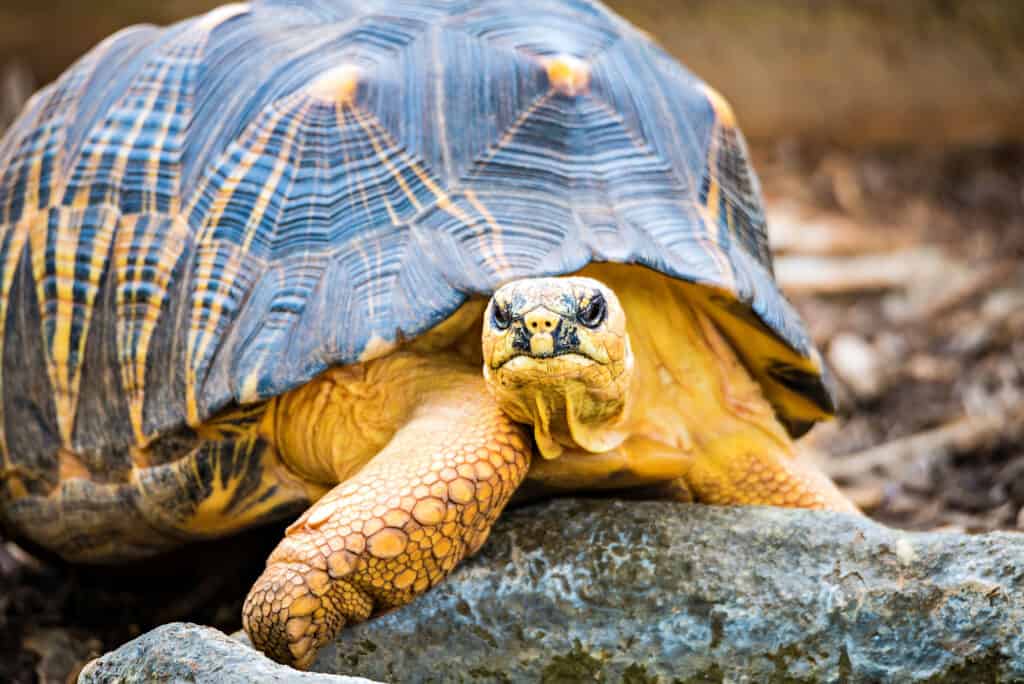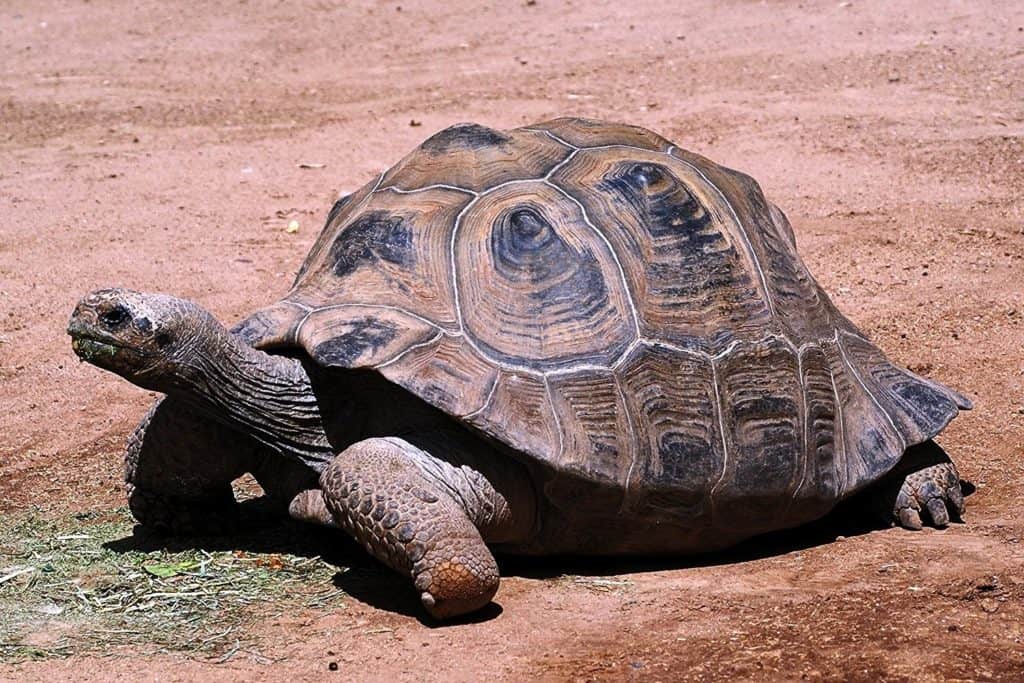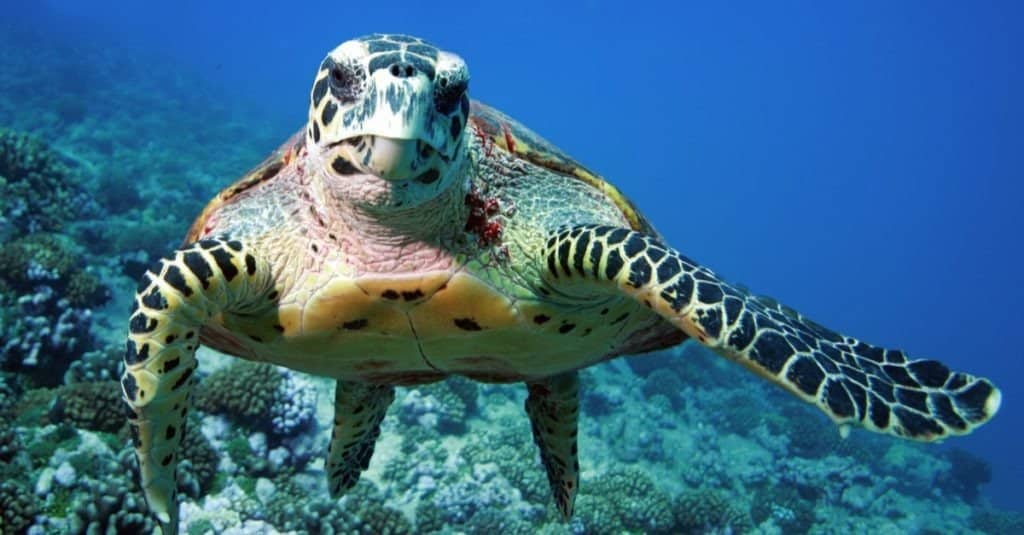When you first hear the word “Testudines”, you may not understand what it is you are hearing! Is it a fruit, a strange food, or a type of mineral deposit? Well, not exactly. In fact, you probably DO know what Testudines are, even if you don’t recognize the word. Today, we are going to learn a little about the amazing world of Testudines and all the things they do. Let’s get started!
Testudines, Some of the Most Common Creatures on the Planet

Testudines are the scientific group commonly known as
turtles
.
©iStock.com/alex grichenko
Simply put, Testudines are the scientific order of reptiles that are commonly referred to as turtles. So what are Testudines? Turtles!
Although that may give a literal answer for what a Testudine is, it doesn’t tell us what makes a Testudine. Thankfully, it’s not too complicated. In the world of scientific naming and categorization (otherwise known as taxonomy), a Testudine is the order of reptiles that have a shell developed from their ribs. Essentially, if it’s a reptile and its shell has evolved to form from its ribs, it is probably a Testudine. Knowing that, we can safely assume that all turtles don’t just have a shell, they are a shell. In the same way that your ribcage isn’t something you can “take off”, turtles would die if their shell was taken off or severely damaged.
Getting more specific, there are actually two distinct types of Testudines: side-necked turtles and hidden-necked turtles. Their differences are somewhat explained in their names, but here’s a bit about them.
Side-Necked Turtles
Side-necked turtles are defined by their inability to pull their heads into their shells. All turtles in this suborder are known as Pleurodira, which translates literally to “side-necked”. Almost all side-necked turtles live in the southern hemisphere, primarily in Australia, South America, and Africa, each being grouped into its own family. The three different side-necked turtle families are:
- Austro-South American side-necked turtles
- African mud terrapins
- American side-neck river turtles

Geoffroys side-necked turtles are endemic to South America.
©iStock.com/N-sky
Most side-necked turtles bend their head into their shell horizontally, essentially folding their head and neck away to the side. Their shells usually have an extended lip to provide some extra coverage, and most species have a small space near their front legs where they can easily place their head for protection. When compared to hidden neck turtles, side-necked turtles have distinctly different anatomy, especially when it comes to the spine.
Hidden-Necked Turtles
The other half of “turtledom” is a group known as the Cryptodira, which translates to “hidden neck”. These turtles are known as hidden-necked turtles because of their unique ability to retract their head and neck straight back into their shells without laying it sideways. This type of turtle is probably the most commonly recognized by most people, and includes famous groups like:

One of the largest tortoises in the world, the Aldabra Giant Tortoise, is a hidden-necked Testudine.
©5of7 / CC BY-SA 2.0, Flickr – License
These types of Testudines evolved during the Jurassic Period and nearly replaced their side-necked relatives. The ability to totally hide their neck and head allowed these reptiles to thrive, and they have since spread to almost every environment on earth. Additionally, the physical difference with hidden neck turtles can be seen in their necks, especially their cervical vertebrae. Essentially, there is a lot of space between the vertebrae which can be shortened when needed. This shortening is what causes their necks to retract.
Turtle vs. Tortoise

A
tortoise
usually just refers to a turtle that is slow and lives entirely on land.
©Joseph Alexander Cruz/Shutterstock.com
One of the most common questions that people have regarding Testudines involves tortoises. Thankfully, it’s not too hard to break it down.
Tortoise isn’t actually a scientific word, but a colloquial one (a word commonly used by regular people). Most cultures generally refer to tortoises when they are referencing land-based turtles that can’t swim, although it’s important to note that they are still turtles. All tortoises are within the Testudines’ order since all tortoises are technically turtles.
In different places of the world, the usage of the term “tortoise” can actually mean different things, especially when confused with the word terrapin. “Turtles” in general American English usually reference aquatic Testudines, while “tortoises” usually reference slow-moving, land-dwelling Testudines. In British English, “turtle” is rarely used to reference all members of Testudines. In Australia, “tortoise” is often the word used to describe freshwater turtles, although some disagree and use the American meaning instead.
Essentially, it depends on where you live!
Where Do Testudines Live?

You can find turtles in almost every environment on earth.
©Achimdiver/Shutterstock.com
Turtles can be found almost everywhere on earth. In fact, there are around 360 species of turtle, each with a unique distribution and habitat. Turtles live in:
- Arid climates like deserts and savannahs.
- Aquatic environments like the ocean, swamps, rivers, lakes, streams.
- Forested environments like coniferous or deciduous woodlands.
- Island environments (especially large tortoises).
- And many more!
The only places where turtles can’t be found are in Antarctica and in extreme polar regions to the north.
What Do Turtles Eat?

Turtles are mostly omnivorous, but each species has its own preferences.
©Sista Vongjintanaruks/Shutterstock.com
With how many species of turtle there are, the answer to “what do they eat” is a tough one. If you account for all turtles in general, they collectively eat almost everything! Still, there are segments of turtles that eat specialized things. For example:
- Snapping turtles are carnivores and mostly eat fish.
- Sea turtles can eat seaweed, jellyfish, small fish, and more, depending on the species.
- Tortoises mostly eat leafy plants and fruit.
Overall, most turtles would be considered omnivorous, as they eat a mixture of greenery, insects, and other small items.
Up Next
- How Old is the World’s Oldest Turtle? 5 Turtles that Survived for Centuries
- Sea Turtle vs Land Turtle: What Are The Differences?
- 10 Amazing Turtles in North Carolina
The photo featured at the top of this post is © iStock.com/thomasmales
Thank you for reading! Have some feedback for us? Contact the AZ Animals editorial team.






